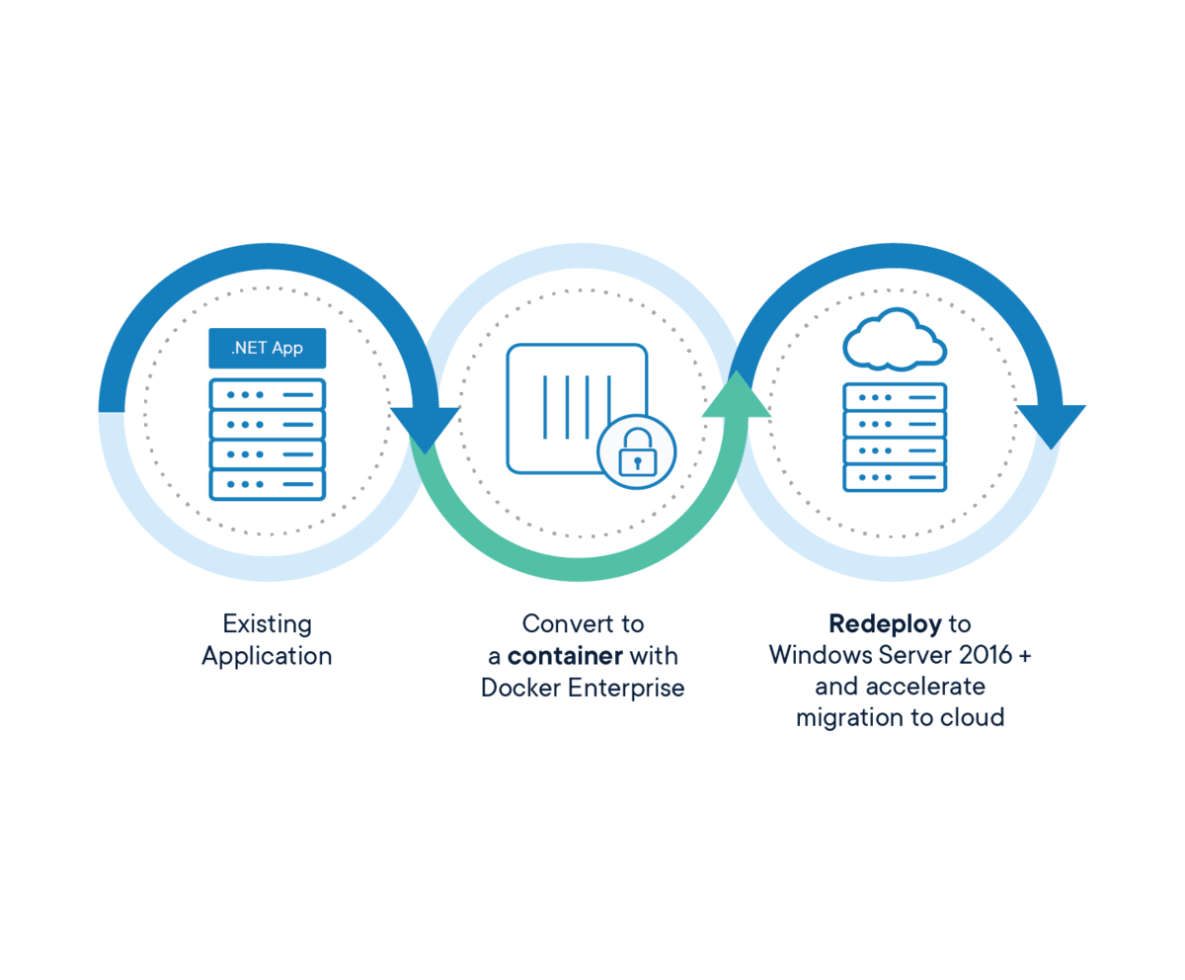Windows Server 2008 Cutoff: How Docker Enterprise Cures Migration Headaches

The End is Nigh (For Windows Server 2008)
The coming end-of-support for Windows Server 2008 in January 2020 leaves IT organizations with a few viable options: migrate to a supported operating system (OS), rehost in Azure, or pay for an extended support contract (up to 75% of the license fee per year) to receive security updates beyond the cut-off date. The option of doing nothing (running applications on unsupported OS versions) is a non-starter for the vast majority of businesses, as this poses a significant security and compliance risk. We saw the impact of this last year when a massive ransomware attack that affected nearly 100 countries spread by targeting end-of-life and unpatched systems.The application migration migraine
Upgrading will be no small feat as roughly 80% of all enterprise applications run on Windows Server. Of those applications, 70% still run on Windows Server 2008 or earlier versions*. Migrating all of these critical applications to a supported version of Windows Server is painful and costly, due to rigid legacy application architectures that are riddled with dependencies. The result is that extensive engineering and IT resources are required to migrate these applications to run on a new operating system. This challenge is further compounded by the fact that many organizations don’t even know how many out-of-support systems they have and which applications might be impacted.Seize the moment: Continerize legacy Windows applications
The good news is that Docker and Microsoft have been working together since 2014 to bring containers to Windows Server applications, along with the benefits of isolation, portability and security. By containerizing legacy applications and their dependencies with the Docker Enterprise container platform, they can be moved to Windows Server 2016 and later OS without code changes, saving millions in development costs. And because containerized applications run independently of the underlying operating system, they break the cycle of extensive, dependency ridden upgrades, creating a future-proof architecture that makes it easy to always stay current on the latest OS.Docker Enterprise is the fastest, surest path to success
Docker Enterprise is the fastest, simplest path to identify and modernize legacy Windows Server applications to a cloud-portable architecture. Using Docker Enterprise, customers can upgrade and improve application security and reliability; all while cutting costs by up to 50%. Docker helps you meet migration deadlines by providing a validated methodology for containerizing legacy applications. The combination of our enterprise container platform, purpose-built tools that accelerate containerization and an integrated approach to building a production container environment help turn your IT department into a “container factory”.
- Docker Enterprise allows you to upgrade Windows Server applications to a cloud portable architecture without recoding. And only Docker can run Windows Server containers.
- Docker has the purpose-built tools to help discover Windows Server 2003 and 2008 applications and bring them onto the Docker Enterprise platform.
- Docker has field tested expertise and proven methodology for modernizing traditional applications that demonstrates immediate value and can be repeated for future migrations.
To learn more about modernizing legacy Windows applications:
- Sign up for the Oct 4th webinar: Bringing Modern Security to Legacy Windows Apps with Docker
- Try the free, hosted trial of Docker Enterprise
- Contact us to schedule an assessment and find out how much you can save






